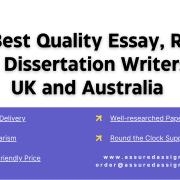Introduction
The assignment deals with the analysis of the speech given by the first Prime Minister of India before the independence of the country. The assignment also deals with the brief analysis of statements that are given by the Chief Executive Officer of Wal-Mart which is one of the leading retail stores in the world. Further, the illustration of the comparison of the speech of Pandit Jawaharlal Nehru, the first Indian Prime Minister, and the statements of Mr. Doug McMillion who is the current Chief Executive Officer is elaborated (Alnasser, Shaban & Al-Zubi, 2016).
Analysis of the famous speech
Pandit Jawaharlal Nehru starts his speech with the presentation of the tryst with destiny which was planned way back in the prior years, which gives the reference to the continuous freedom struggle against the rule of the British which had captured the entire country as its colony. He refers to the time then when the country had achieved independence and the official declaration was about to be conducted. In his first statement only, he refers to the complete independence of the country which was still not regarded as full independence as a part of India was getting separated from its map as a separate country to be called Pakistan.
Hence, the speech of the former prime minister addresses the independence of the nation to be not wholly or in complete measure but in a substantial way (Ateljevic, Morgan & Pritchard, 2013). He refers to the significance of the moment of dawn that would represent the awakening of India into its freedom and independence. Pandit Nehru very significantly represents the vital moment with beautiful use of works such as for stepping into the old times into the new age would occur with the new dawn. The new dawn, in his speech, is also compared to the awakening of the souls of the country which was shut down and suppressed for a very long time, and finally, the nation would start to utter its words of independence. He also refers to that specific moment to be a memorable one for every generation in the future.
He asks the entire country to take a pledge of dedication for the service of the country along with the citizens of the country. He also thinks about every individual being dedicated to serving the human community as a whole with freedom as a part of the responsibility which is accompanied by independence (Chabrak & Craig, 2013). He remarks on the several dawns that passed by the timeline of the county which witnessed never-ending struggles to achieve the independence that the country got and compared the dawn which was about to witness the declaration of independence of the entire country (Fruhen & Flin, 2016). He stated that the future centuries will appreciate and feel proud to have such grandeur of success which came after many years of striving and failures. He did not miss any point to state that the country did not lose hope and kept on insisting on continuous hope and strength for achieving freedom and independence despite having high failure rates and struggles. He focuses on the responsibility that power and freedom bring with it.
He states that the accountability of the country is in the assembly which is a sovereign body of the country. He admires the creation of freedom through the pains of labor and struggles and memorizes the sorrow of every struggle (Haupt, Kapucu & Hu, 2017). He focuses on the struggle for having a bright future which would also not be an easy one. He states that for obtaining a bright future for the country, he addresses the citizens to take and fulfilling the pledges. He focuses on the end of ignorance, poverty, disease, and inequality for obtaining opportunities in all walks of life.
He focuses on the need for having awakened ambitions, hard work, and dreams for having a bright future for the entire country. He refers to the obtainment of peace among all so that the world does not get spilled and isolated into fragments. He instills confidence and faith in the future endeavors of the country and gets rid of all the negative aspects that would prove to be hindrances in the way of achieving a bright future. He also encourages and celebrates freedom which has its base in sorrow and difficult times.
In the case of Wal-Mart, the Chief Executive Officer, Mr Doug McMillion has focused on the customer proposition of the company through which it can enhance its service to the customers. He states that the company has increased its stores, e-commerce capabilities, and associates. He further passes the facts to the mass regarding the 260 million customers to be visiting its stores and the expansion of the Retail Company to be in 27 countries.
He focuses on the enterprise strategy guides for meeting the expectations and delivery on the proposition of the customer (Hodge, 2017). He states that the growth of the company has been installed in its effective execution both in stores and e-commerce. He takes pride in the fiscal report of Wal-Mart of 2015 which states that the financial status of the company grew by more than $ 9 billion. His statements are focused on having great stores, e-commerce, and clubs due to which it can provide satisfactory service to its customers. He appears to be very pleased with the increase in net sales which refers to the improved sales and operating trends of income of the company with each consecutive quarter.
He shows his pleased feelings with the positive performance of the company in foreign markets. Through his statements, he also presents the dissatisfaction and unsettlement of the company in the way of achieving greater success rates. He also states that the Sam’s Club has been strengthening the digital integration with various clubs which is also assisting the increased business performance (Hunter, 2014). He focuses on the investment in the relevance of the customers by establishing higher customer expectations. He also happens to focus on the high engagement and motivation of the employees. He also stresses the significance of talent and commitment to the success of Wal-Mart.
Structural Comparison of Speech and Statement
It is necessary to understand the underlying objective of the speech and the statement released by the company are different and focus on different objectives altogether. But this specific structural comparison has been carried out to compare the two different pieces to understand how well each of them was able to succeed in their stated objectives of communicating the respective messages to the intended target audiences (KASHANINIA, Hosseini & Yusliani, 2015).
Speech by Jawaharlal Nehru: The speech made by Pandit Jawaharlal Nehru on August 14th, 1947 very correctly focuses on the fact that with freedom and power of the nation, there comes an added responsibility that rests on the assembly that represents the people of the nation. His speech highlighted the need to work together to put an end to poverty, ignorance, and inequality in several aspects (McKenzie & Lee, 2016).
The passion to convert India into a prosperous and progressive nation could be very well identified in the tone of the speech which focused on the need to provide equal opportunities, obligations, and privileges to all its citizens.
The speech by the first Indian Prime Minister was very inspiring since it focused on several aspects of the nation that needed to be changed so that the conditions of the people could be changed for the better and the overall state of the nation could be improved. But the structural comparison of the speech shows that even after 70 years of independence, the content of the speech is far from the reality since even today a majority section of the population is below the poverty line and they do not even have access to basic needs of life such as food, education, sanitation, shelter, etc.
The nation is progressing but the rate at which the progression is taking place is very slow because of several factors like corruption, bribery, terrorism from outside nations and internal terrorism, etc (Newman, Patterson & Clark, 2015).
The freedom that India has achieved has come along with a series of challenges and responsibilities that need to be tackled effectively so that the common good is achieved. But most of the people that have been elected and have power try to take advantage of the situation and think of their benefits before thinking of the nation. Due to this, there is significant contrast between the India that Nehru was talking about in the speech and the actual India of today (O’Brien, 2015).
Wal-Mart statement: The communication that has been made by the CEO of Wal-Mart stores Mr Doug McMillion, highlights the changes that have taken place in the retail industry in the past years. The stress has been on the fact that even though there are several differences in the global market such as language and culture, the ultimate expectations of a customer from a retailer are still the same – saving financial resources and saving time.
As per the CEO, the entire business model of Walmart revolves around the objective to serve the customers in a better manner so that its sales expansion and profitability can match (Zori, 2016).
The statement that was released by the CEO laid stress on its customers and their overall experience while interacting in the retail environment. The statement revealed the fact that the business intends to design its work model on its customers’ preferences so that their ultimate needs and requirements can be fulfilled by the retailer. It has also modeled its financial performance in such a manner so that its stores, and e-commerce presence can bring about a positive change in the retail scenario for the customers and enrich their overall experience (Pherson & Pherson, 2016). It can be said that the business has brought about important changes in its business strategy and it is still taking important steps to make the world a better place.
Mr. Doug has himself been in the concern for a long time and he has stated that talent gets due recognition in the business undertaking and the business takes necessary steps in the form of increasing the training opportunities and strengthening the compensation structure for the business associates so that they can adapt to the changing working conditions and react in a faster manner to the different needs of the customers (Wesselink, et al., 2015).
It can be said that the business has achieved some part of its objective but still, it has a long way to go and further improve its delivery performance. Several external elements like intense competition in the retail sector, uncertain demand patterns of the customers, etc pose new kinds of challenges in front of the retail business but its determined focus has allowed it to deliver a good performance in the industry (Rawwas, Arjoon & Sidani, 2013).
Conclusion
The different topics that have been covered involving the Prime Minister’s speech and Wal-Mart CEO Statement reflect the fact that to achieve a particular objective a business concern or a nation needs to design proper strategies and implement the same from all directions so that the necessary changes can be observed within a specific timeframe. It is also important that all the parties must join hands together to bring about the required change otherwise it becomes pretty challenging.
The Wal-Mart scenario reveals that the business’s focused attitude and strategic approach at an organizational level has allowed it to focus on the needs of the customers and sustainably perform operational activities. The speech given by Jawaharlal Nehru in the past shows that he wished for India to be corruption free, economically strong, and flourishing after gaining its independence from the British but due to various challenging elements that operate in the environment, the momentum of growth has declined but still, a few leaders are making an attempt to help the citizens to rise above existing challenges.
References
Alnasser, N., Shaban, O.S. and Al-Zubi, Z., 2016. The Impact of Accounting Ethics in Improving Managers’ Behavior and Decision Making in the Jordanian Companies. Oxford Economic Papers, p.942.
Ateljevic, I., Morgan, N. and Pritchard, A. eds., 2013. The critical turn in tourism studies: Creating an academy of hope (Vol. 22). Routledge.
Chabrak, N. and Craig, R., 2013. Student imaginings, cognitive dissonance, and critical thinking. Critical Perspectives on Accounting, 24(2), pp.91-104.
Fruhen, L.S. and Flin, R., 2016. ‘Chronic unease for safety in senior managers: an interview study of its components, behaviors, and consequences. Journal of Risk Research, 19(5), pp.645-663.
Haupt, B., Kapucu, N. and Hu, Q., 2017. Core Competencies in Master of Public Administration Programs: Perspectives from Local Government Managers. JOURNAL OF PUBLIC AFFAIRS EDUCATION, p.611.
Hodge, S., 2017. Case studies in adapted physical education: Empowering critical thinking. Taylor & Francis.
Hunter, D.A., 2014. A practical guide to critical thinking: Deciding what to do and believe. John Wiley & Sons.
KASHANINIA, Z., Hosseini, M.A. and Yusliani, F., 2015. The effect of teaching critical thinking skills on the decision-making style of nursing managers.
McKenzie, R.B. and Lee, D.R., 2016. Microeconomics for MBAs: The economic way of thinking for managers. Cambridge University Press.
Newman, C., Patterson, K. and Clark, G., 2015. Evaluation of a support and challenge framework for nursing managers in correctional and forensic health. Journal of nursing management, 23(1), pp.118-127.
O’Brien, J., 2015. Do You Fit The Bill? -8 crucial skills maintenance managers must have. Asset Management & Maintenance Journal, 28(2), p.19.
Pherson, K.H. and Pherson, R.H., 2016. Critical thinking for strategic intelligence. Cq Press.
Ramazani, J. and Jergeas, G., 2015. Project managers and the journey from good to great: The benefits of investment in project management training and education. International Journal of Project Management, 33(1), pp.41-52.
Rawwas, M.Y., Arjoon, S. and Sidani, Y., 2013. An introduction of epistemology to business ethics: A study of marketing middle-managers. Journal of Business Ethics, 117(3), pp.525-539.
Wesselink, R., Blok, V., van Leur, S., Lans, T. and Dentoni, D., 2015. Individual competencies for managers engaged in corporate sustainable management practices. Journal of Cleaner Production, 106, pp.497-506.
Zori, S., 2016. Could Critical Thinking Help Create Nurse Managers Who are Transformational Leaders?











